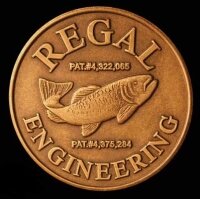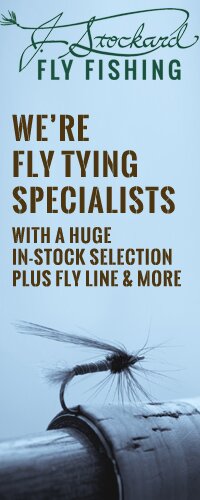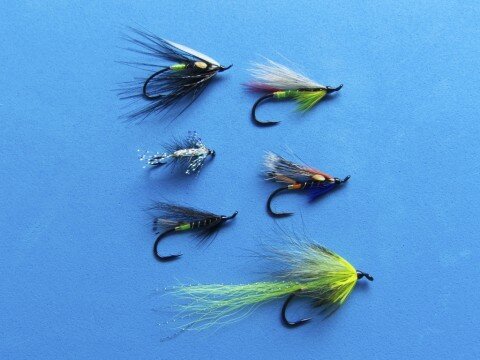
If we were to play a word association game with Southern New England fly fishers, what words would the name Dave Goulet conjure up? Most would probably say, “Classic & Custom,” the name of Dave’s fly shop. Others would mention the Farmington River. After moving Classic & Custom from Holyoke, Massachusetts to New Hartford, Connecticut, the shop sat near the banks of the Farmington until Dave’s retirement in 2009. Some might mention the wary Farmington brown trout, on which Dave was an expert. And you might hear mention of some of Dave’s most well known trout flies, such as Moby Dick, Unicorn, Dirt Diver, or a host of others. Regardless of the words associated with Dave’s name, most would agree that Dave left an inedible mark on the local trout fishing community.
A much smaller percentage of us tapped into Dave’s other area of expertise. Dave is a hardcore atlantic salmon fisherman. Though he has fished all over maritime Canada, Dave knows the Miramichi River inside and out. In terms of atlantic salmon fishermen, Dave Goulet is my favorite kind. He has never been afraid of public water. In a world seemingly full of pricey lodges, pristine Bogdan reels and an overt sense of exclusivity, Dave is the real deal…a salmon fisherman’s fisherman.
Though Dave is mostly known as an innovative trout fly tyer, he has created some fine atlantic salmon flies. I am aware of six original patterns. Four of which can be found in Flies for Atlantic Salmon (Stewart & Allen; 2001) and The Complete Directory of Salmon & Steelhead Flies (Mann; 2008), among other publications. As far as I know, the two remaining flies have never been published.
Below are the dressings for all six of Dave’s original patterns. I didn’t try to copy Dave’s tying style, but I did try to respect his choice of materials whenever possible. There are a few unavoidable material substitutions, however. For a more personal account of my experiences with Dave, please see my piece in the Spring 2014 issue of the Atlantic Salmon Journal (Fit To Be Tied, p. 62).
The Atlantic Salmon Flies of Dave Goulet
(tied and photographed by Ben Bilello)
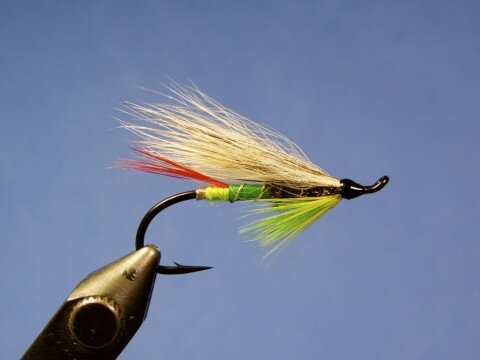
Bette Jane
Tag: Oval gold tinsel
Butt: Fluorescent green wool
Tail: Red hackle barbs
Rib: Oval gold tinsel
Body: Rear half: medium green floss; Front half: peacock herl
Throat: Yellow hackle over light green hackle
Wing: Badger hair
Head: Black
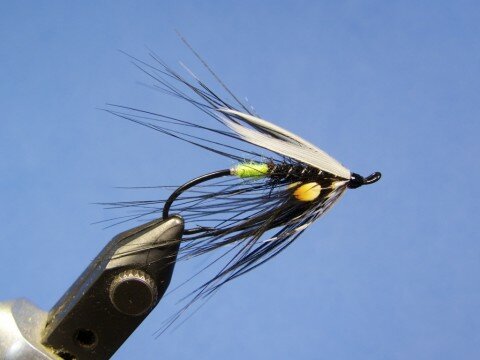
Catch-A-Me Lodge
Tag: Oval silver tinsel
Butt: Fluorescent green wool
Rib: Oval silver tinsel
Body: Black seal fur (or substitute)
Hackle: Golden pheasant breast feather dyed black (or other spey-type hackle)
Throat: Speckled guinea fowl
Wing: Two strips of white goose shoulder, tied short and splayed (Dee style)
Cheeks: Jungle cock (optional)
Head: Black
*The original was tied with a black silver pheasant body hackle.

Chipper Lodge
Tag: Flat gold tinsel
Butt: Fluorescent orange floss
Tail: Golden Pheasant tippets, tied in at the second black bar
Rib: Oval gold tinsel
Body: Black wool
Throat: Purple hackle
Wing: Woodchuck guard hairs, topped with soft orange hackle fibers 1/3 of wing length
Cheeks: Jungle cock (optional)
Head: Black
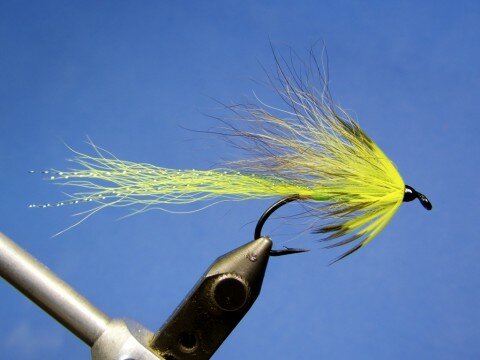
Cockburn (unpublished)
Tag: Flat silver tinsel
Tail: Chartreuse bucktail with a few strands of peacock green Krystal Flash
Body: Fluorescent green floss
Underwing: Chartreuse arctic fox or bucktail with black tips
Wing: Chartreuse arctic fox or bucktail with black tips
Hackle: Black-Laced-White hen saddle dyed fluorescent yellow; tied collar style
Head: Black
*The underwing and wing were originally tied with dyed mongoose fur.

Golden Girl
Tag: Flat gold tinsel
Butt: Fluorescent green floss
Tail: Golden pheasant tippet strands
Rib: Oval gold tinsel
Body: Black floss
Throat: Black hackle
Wing: Black squirrel tail
Head: Black
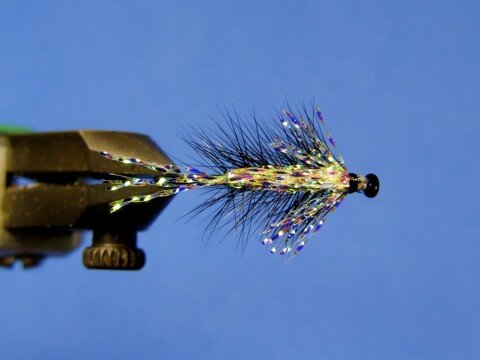
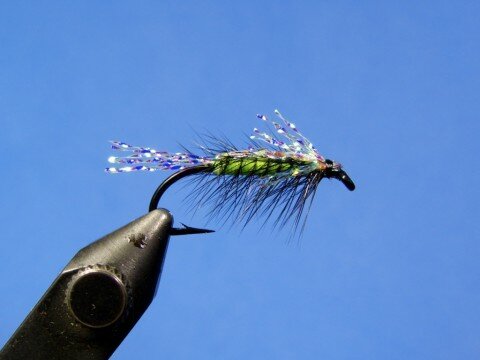
Mezmerizer (unpublished)
Tail: Pearl Krystal Flash (or substitute flash material)
Shellback: Pearl Krystal Flash (or substitute flash material)
Hackle: Black, palmered up length of body
Body: Fluorescent green floss
Wing: Pearl Krystal Flash (or substitute flash material), doubled back and evenly distributed on both sides of the hook shank (same flash as used to make the shellback)
Head: Butt ends of the Krystal Flash wing and black thread
*The original was tied with a generic Krystal Flash substitute with which I am unfamiliar. It is less kinky than the original Krystal Flash. I substituted Crystal Mirror Flash in the fly pictured.









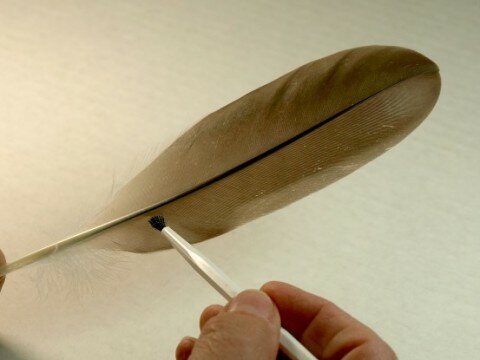
 From a local hardware store, pick up a tube of “Amazing Goop.” I used the original but any of their formulas will work. The tube comes in different sizes. I picked up the 1 ounce size and paid $4.00. Next, I picked up a quart of toluene (it’s the smallest I could find) and paid $9.00.
From a local hardware store, pick up a tube of “Amazing Goop.” I used the original but any of their formulas will work. The tube comes in different sizes. I picked up the 1 ounce size and paid $4.00. Next, I picked up a quart of toluene (it’s the smallest I could find) and paid $9.00.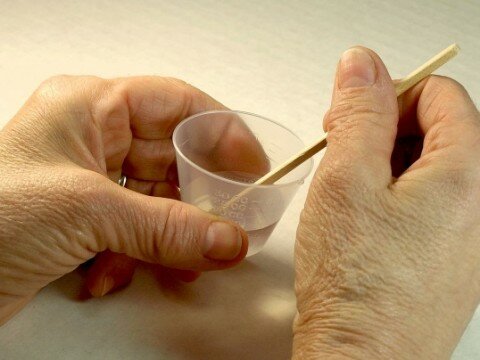
 The ‘commercial’ product arrives in a little 1oz. flint wide mouth square glass bottle with a polyseal cone lid. These bottles are available on the internet but only in large quantities. I suggest that you talk to a local pharmacist and see if they can assist with an alternative bottle.
The ‘commercial’ product arrives in a little 1oz. flint wide mouth square glass bottle with a polyseal cone lid. These bottles are available on the internet but only in large quantities. I suggest that you talk to a local pharmacist and see if they can assist with an alternative bottle.
